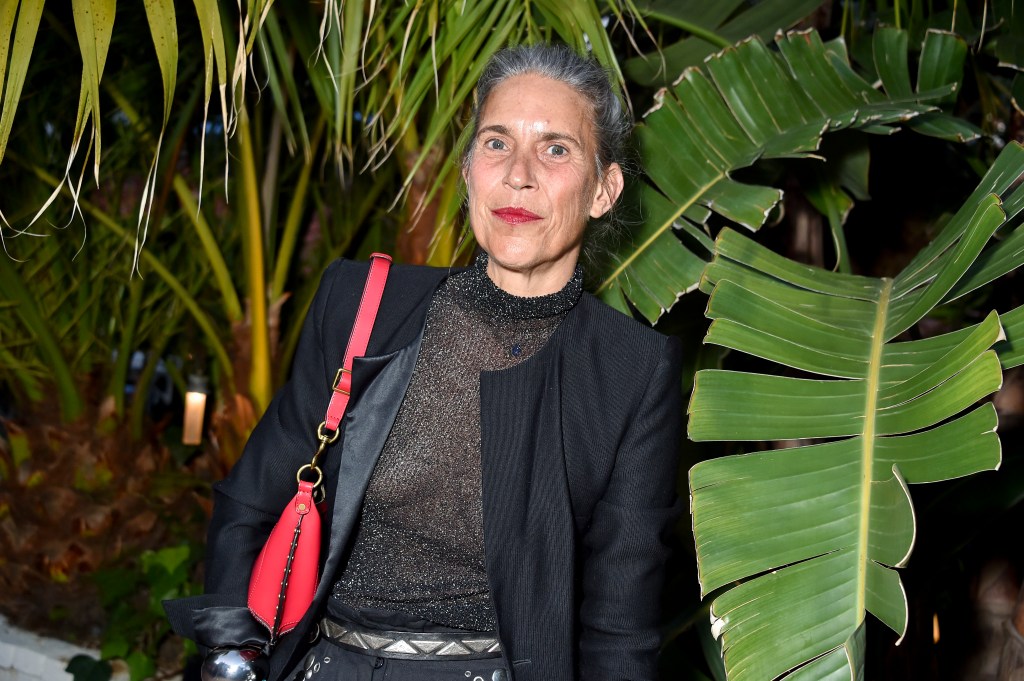PARIS — The first edition of Design Miami/Paris unfurled at the city’s L’Hôtel des Maisons, a palatial 18th-century mansion in Saint-Germain-des-Prés, the former home of Karl Lagerfeld and the Pozzo di Borgo family before that. It was a far cry from the temporary spaces it normally occupies in Basel, Switzerland, and Miami.
Design Miami chief executive officer Jennifer Roberts said the Paris expansion was a natural evolution. “With the Miami edition looking toward its 20th anniversary next year, and the Basel anniversary close behind, this year felt like the ideal time to expand. Paris is an international cultural hub — rich with cultural heritage and significant design history, whilst also the epicenter of contemporary creativity, art, fashion, architecture, and of course, design,” she told WWD. Paris is also already home to many of the regular exhibitors at the Miami and Basel editions.
But its Paris premiere was also the start of a new era, as the fair announced its acquisition by online marketplace Basic.Space during the week — one filled with synergies, according to the marketplace’s founder and CEO Jesse Lee — who will come on board as Design Miami’s chairman. The first moves will be seen at the December edition of the fair in Miami, with an increased presence of Basic.Space on- and off-site but also “potentially introducing a handful of artists and galleries through our network on the [marketplace] front.”
While it was still early for any learnings from the inaugural Paris edition, Lee said he and Roberts were weighing options, such as “testing out a new market city in addition to the anchors [they] have right now,” with the objective being to “expand the brand and to reach as much as possible without compromising the quality of the show.”
In the meantime, Design Miami/Paris welcomed 27 of the world’s leading design galleries — and the scores of visitors flooding the city for its art-centric week that included the second edition Paris+ by Art Basel, which closed here on Sunday.
Here are the highlights:
Samuel Ross

The nearly 4.5 meters-long succession of concave and convex spaces titled Caucus is “as far away from the idea of a public bench one could have,” said British designer Samuel Ross. Particularly the zesty industrial yellow version that cut a striking figure in an elegant 19th-century salon at the Paris design fair. In fact, it’s his way of proving that “furniture can sit in the same cannon as public sculpture,” he said.
With the idea that the seated position creates a “deeper relationship to haptics, texture, temperature, material,” Ross started with hand sketches and drawings in charcoal, Indian ink and pencil that were translated into CNC steel with a powder coating, he said.
His fourth furniture offering is meant to trigger a “fleeting moment that can really open up a channel [for conversation], enhance an experience or become a revelation of sorts, which may become a rabbit hole of thinking,” he said.
Three versions of Ross’ design will be installed permanently in the Miami Design District, ready to offer the “immediate pull of who, what, why, when, where and how” he experienced discovering a Henry Moore sculpture in London’s Kensington Gardens.
“Furniture almost solicits this opinion and opportunity for functional sculpture to come into the public forum,” said Ross, and a public bench is “the perfect host to carry a lot of these connotations — if leveraged properly.”
Galerie Mitterrand
Visitors would have been remiss not to stop at François-Xavier Lalanne’s charming “Âne Attelé” sculpture in the courtyard, before heading inside to see the rest of the artist’s furniture and works at Galerie Mitterrand. Among the highlights were the crocodile chairs and table, a pair of silver sitting monkeys as well as one of the famous Choupatte figure of a cabbage perched on avian feet.

Ketabi Bourdet Design

Bringing black aesthetics to life via metal and geometric lines, the Ketabi Bourdet Design gallery, a “smoking room” space, showcased how post-modern furniture can coexist with classic architecture and rich decor, exploring a bourgeois and radical side of the ’80s with a selection of rare designs by Philippe Starck, Paolo Pallucco & Mireille Rivier, Ronald Cecil Sportes, Jean-Michel Wilmotte, Rei Kawakubo, Christian Duc and Garouste & Bonetti.
Karry Berreby

Organizers welcomed new exhibitors, including Parisian jewelry expert Karry Berreby, who presented a selection of incredible creations. Design Miami said Berreby, in addition to her own designs, rare pieces and personal creations, is also known for popularizing watch collecting among women.
Galerie Desprez-Breheret

Galerie Desprez-Breheret recreated the interiors of a Parisian ’70s hotel with seating by Dan Pollock, who crafts monoxyle and singular furniture carved from eco-responsible, dead wood collected in the Californian desert, offering a raw elegance that contrasts with the ornate interiors of the old mansion.
R & Company

New York’s R & Company presented a selection of innovative works, culminating in Veiled in a Dream by American art furniture pioneer Wendell Castle. The bronze sculpture is comprised of three vertical cone-shaped objects and a scooped out oval that serves as a seat.


